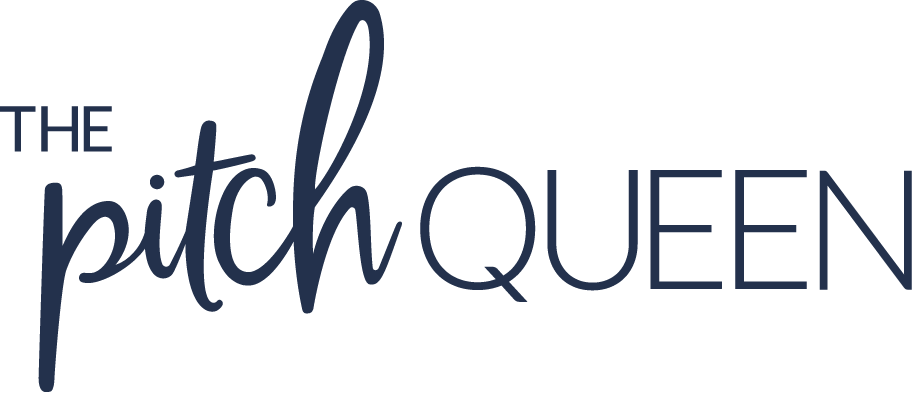
It’s that moment when somebody asks you that question that you know is coming on a sales call: “What is it going to cost to work with you?” (With usually a hint of worry on the “cost” part, right?)
So how do you answer that?
Chances are that your prospect is only thinking about the money when they ask that question. As in, “what’s the bottom line here and what’s it going to cost me?”
Sure, they’re looking for a number in dollars. But there actually IS another answer to that question of cost. And honestly, it’s a better one, too. One that is going to make a BIG difference in whether or not you get a “yes.”
Let’s say that you’re pretty good at the essentials of sales calls. You know your value, own your worth, believe in yourself, all that stuff. But what happens when you feel that twinge of resistance on the other end of the phone? When it gets down to the nitty gritty of the deal? When you know what they’re gonna ask?
But the thing is–when it comes to it, cost isn’t necessarily about money. Investment is about money. Cost is about something else.
When someone asks you what working with you is gonna cost, tell them the truth.
Tell them that the cost is what they are missing out on. That is, what they’re missing by not working with you.
What does that mean? Let’s dive into a few examples right here:
I have a friend who runs a tax business. Her client base is mainly people who are making somewhere around $5000, and they want it to be more for less, so to speak. Her audience is people who want to leverage their time to make more money and work fewer hours.
So when it comes to her programs and services, she’s teaching people how they can take home double the income and work half the time by selling a higher ticket service. Easy peasy, right?
But what is the cost of working with her? Or to put it another way, what is the cost of passing on the opportunity to work with her?
When you put it that way, the cost is that they’re not increasing their bottom line. It’s that they are still working the same number of hours and for the same old money.
What she offers is a chance to make more money, and work less hours. That’s what her clients REALLY want. So the cost of her program is that they will not be missing out on these things anymore. Problem solved.
Now that sounds like it would be worth the investment, right?
We’re not breaking down how much we’re charging for investment yet. At this point it’s irrelevant. It’s not about the investment.
The question is are you going to solve their problem with what you’re selling? That’s the bottom line.
Say you had a client who wants to start an online business but has no idea what he wants it to be. He’s working a soul-crushing job that doesn’t make him the kind of money he wants and keeps him chained to a desk 9-5, Monday through Friday.
You know you’re someone who could get him from “no idea” to an online business in 90 days. When he asks you what the cost would be to work with you, what will you say?
Now, the investment might be $3995. But the cost?
What you want to say here is not what the price is–but rather what the cost is. What does it cost somebody who wants to make more money to not take action?
In this case it’s costing them to be still working at their job. They are stuck at their desk when they really want location independence. They aren’t able to make an impact doing something they believe in.
THAT, my friend, is what it’s costing him to not take action.
At this point if he wants to know the investment, well, that’s easy– it’s $3995 for 12 weeks. But the cost–and the potential reward of taking big action—is SO much more important than that.
Here’s another example: A client of mine works 50 hours a week with and makes $250,000 a year. What he really wants is to flip those numbers and and double his income to work 25 hours a week and take home $500K.
But there’s even more to it than just the numbers–there’s the WHY of it too.
He wants all this so he can spend more time with his son. Make it to games. Be the coach for his kid’s team. Go to cub scouts. Do the parenting thing without having to look at the clock so much.
So what’s this guy’s real cost? It’s not only costing him 250K a year and 25 more hours per week behind a desk, but it’s ALSO costing him the father-and-son time that he truly wants the most.
The dollar value of your program or service really is just one part of the whole experience.
It’s about so much more than what the client is paying. It’s about getting the results that help clients live their dream. Your client needs to ask themselves this: is all that worth whatever the financial investment might be?
What is it costing them not to invest the money to learn a new skill and get that much closer to the dream? When you put it that way, the actual monetary investment might not seem like a thing at all.
Remind your client of the biggest thing of all–the cost of inaction.
You’re not stretching the truth or embellishing here. You’re just telling it like it is. They need to understand that it’s not just about the money they lay down on the table to work with you.
It’s about the steep cost of NOT taking action–and the potential to skyrocket their business, their life, and their dreams if they DO.
So how about you? Have you ever had this conversation with a client–and did you ever close a sale by helping someone realize the difference between cost and investment (whether you knew that’s what you were doing or not)? Or did you yourself understand what it was costing you to not hire a coach or a mentor–and you made the investment because it was totally worth it to you? Tell me about it in the comments below!











Trackbacks/Pingbacks